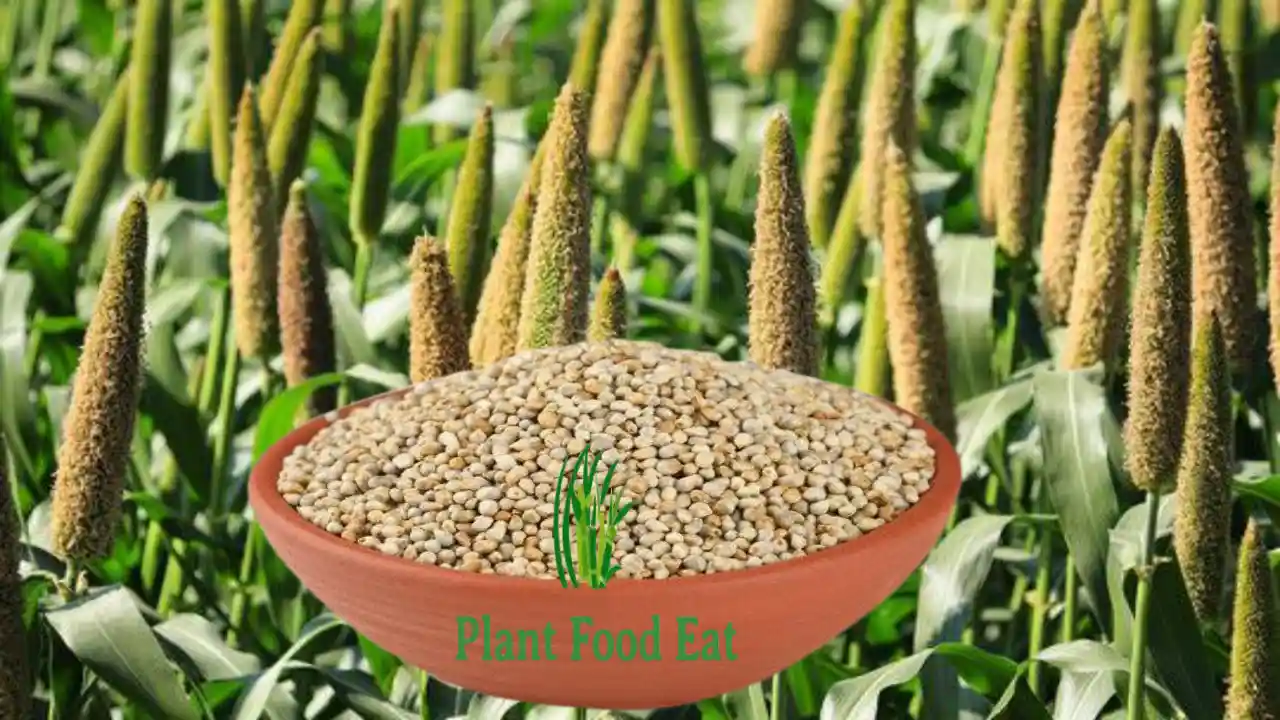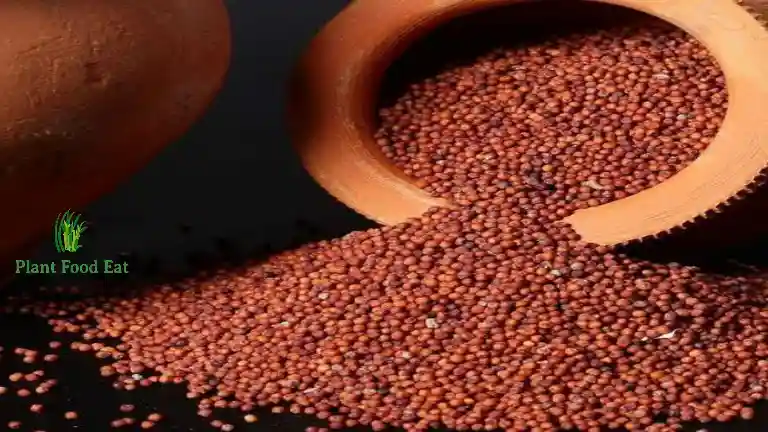Indian cuisine is full of variety and the types, methods, styles of eating vary at every stop. A nutrient rich food culture develops in this food-loving country based on the availability of food locally. Climatic conditions, and the lifestyle of the people. If you have ever traveled to the northern part of the country. You will find an authentic dish ‘Bajra ki Roti with Ghee and Jaggery. Bajra or Pearl Millet Benefits is a commonly used millet across India, especially in the north and western regions of India.
States like Rajasthan, Punjab, Haryana, and Gujarat have a millet-based food culture and dishes like Bajra ki Khichdi, stuffed Bajra ki Roti, and Thalipeeth are an integral part of the regional food culture. Dishes made from millets are not only mouth-watering but also extremely nutritious. Find out the reasons why one should go local, eat traditional food, and understand how the benefits of millets can provide you with lasting health.
Read More: Finger millet benefits
What is pearl millet
Millet is used as a staple food all over the world. Many varieties of it are produced widely. A millet called “panic” is produced in large quantities in some countries of Asia and Europe. This crop looks like a corn plant when growing. The lifespan of this plant is about 70 days, which is grown in cold and dry areas. It is most used as food. It is generally used as food like rice or in the form of porridge.
Pearl millet nutrients
Pearl millet benefits is considered one of the healthiest foods in the world because it is rich in many nutrients. It contains good amounts of vitamins & nutrients which is listed below:
- calcium
- copper
- iron
- magnesium
- manganese
- selenium
- potassium
- phosphorus
- niacin
- pantothenic
- acid
- riboflavin
- folate
- folic
- acid
- vitamin B6
- vitamin C
- vitamin E
- vitamin K
Due to these nutrients and vitamins it is very useful for our health. Let us know what are the uses of pearl millet benefits rich in these nutrients and vitamins.
Pearl millet uses
Pearl Millet is very useful due to its nutritional properties. Millet is used to make different recipes which is listed below:
- Millet bread
- Millet khichdi
- Chila
- Halwa
- Churma
- Sweet Suhaali (sweet-matthi)
- Biscuit
- Rabri
- Tikki
- Idli
- Dosa
- Upma
15 Pearl millet benefits
Pearl millet benefits is not just an alternative grain. According to experts, it is one of the best sources of nutrients which are very beneficial for our health. There is a special importance of including millet in your diet, which you can know through this article. Let’s know them pearl millet benefits which is described below.
1- Boost energy
Bajra contains iron, carbohydrates, vitamins, protein, magnesium, calcium, zinc etc in large quantities. Hence, consuming Bajra provides energy to the body. Being a good source of energy, it is used in winters. Eating it gives strength to the body and keeps the body healthy.
2- Improve digestion
Bajra strengthens the digestive system. Being rich in fiber, it helps in digestion. Constipation is cured by consuming it. We feel very thirsty after eating it. Hence, we drink water frequently and drinking plenty of water is beneficial for the digestive system. Other stomach ailments like gas, acidity etc. are cured.
3- Anemia (Pearl millet Benefits)
Bajra is a good source of iron. Hence, eating Bajra removes iron deficiency in the blood and it prevents us from getting anemia. Consuming Bajra is also beneficial in case of anorexia and anemia.
4- Reduces stress (pearl millet benefits)
Bajra helps in reducing stress. It has anti-oxidant and amino acid properties, so it is helpful in relieving stress.
5- Reduces heart problems
Reduces heart problems: Eating millet keeps blood circulation good, so arteries do not get blocked and we are protected from heart diseases.
6- Control cholesterol
There is a certain level of cholesterol in the blood of our body. If the amount of cholesterol increases from this level, then it starts accumulating in the arteries of the body. Due to which our blood circulation starts deteriorating. Millet controls the level of cholesterol. It increases good cholesterol and reduces bad cholesterol.
7- Control high blood pressure
Due to low amount of carbohydrates in the pearl millet benefits, the risk of high BP is less. Consumption of millet is helpful in controlling high blood pressure.
8- Reduce risk of cancer
It’s does not allow cancer to happen. Millet has anti-cancer properties, so it does not allow us to get cancer, especially breast cancer.
9- Helpful in weight loss
Millet is digested slowly, so eating it reduces hunger. There is no desire to eat food again and again. Millet has high fiber content, due to which the stomach gets filled quickly, hence it is also helpful in weight loss. Eating it does not increase obesity.
10- Control diabetes
Pearl millet benefits (Bajra) is very beneficial for diabetic patients. Bajra contains carbohydrates which are digested slowly and maintain glucose level for a longer time. By keeping the sugar level in blood under control, that diabetes remains under control.
11- Beneficial in skin related problems
Pearl millet benefits contains vitamin-C and vitamin-E, so eating it makes the skin soft and wrinkles are reduced.
12- Increase immunity
It contains anti-oxidant properties. It helps in increasing our immunity. By increasing immunity, we are saved from many types diseases.
13- Reduce risk of gallstones
Some studies suggest that insoluble fiber is very useful in preventing the formation of gallstones. There are many cases which suggest that consuming millets and other fiber-rich foods reduces the risk of gallstones. Consuming fiber in the right amount reduces the intestinal transit time due to which it also reduces the secretion of bile acid which helps in preventing the formation of gallstones.
14- Healing wonds
You can use a mixture of millet and water to treat your wounds. Millet is known to increase collagen which helps in healing wounds. A study shows that regular use of millet for a few days has been successful in healing wounds of rates quickly.
15- Increase breast milk
Millet is traditionally used to increase breast milk. But there is no scientific evidence yet that it can increase mother’s milk. Many users believe that due to the lactogenic properties present in it, it increases milk production in women.
Side effects of pearl millet
There is no harm in consuming millet in small quantities. But if it is consumed in large quantities, it can cause many problems. Which are as follows. Though there are no major harmful effects of millets, it takes a lot of time to properly digest and process millets which can be harmful. Millet contains small amount of goiterogenic substances. Which inhibit iodine absorption in the body leading to goiter and other thyroid problems.
Goiterogenic substances in food are usually reduced by cooking but cooking or heating millets increases the effect of goiterogenic substances. Hence people suffering from hypothyroidism. Should be cautious while consuming millets.
- Millet contains goitrogen which stimulates the production of thyroid hormone.
- Consuming it in large quantities can cause thyroid problems.
- Consuming millet in large quantities can make your skin dry.
- Excessive use of millet can cause goitre, anxiety, stress and decreased thinking ability.
Types of pearl millet
- Sorghum (Bajra): Sorghum is a popular millet in India and is often consumed in the form of roti, dosa, and rice. It is a good source of fiber and protein and is gluten-free, making it suitable for people with gluten allergy.
- Pearl Millet: Millet is cultivated extensively in North India and is a good source of vitamin B, folate, and antioxidants.
- Finger millet: Ragi is also known as ‘mandua’ or ‘nachni’ and is a source of high protein and calcium. It is especially popular in South India and is made in the form of dosa, idli, and roti.
- Foxtail Millet: Kora or foxtail millet is well digestible and is a good source of fiber and vitamins. It can be eaten in the form of delicious pulao and upma.
- Proso Millet: This can also be consumed widely and is a good source of vitamins, minerals, and proteins.
How to eat pearl millet
You can also prepare pearl millets benefits without soaking them in water to make dishes like dal, pulao, and khichdi. You can also add them to rotis, dosas, and various other dishes.
10 recipes of pearl millet
Various millet preparations are delicious and healthy. Following are some of the major millet foods that you can include in your diet:
- Millet Roti: Millet roti is made by grinding flour of different types of millets. It is highly nutritious and can be eaten with other types of rotis.
- Millet Khichdi: Millet khichdi is a healthy and sattvik dish. Millets are consumed alone or with other pulses, and vegetables and spices are also used in it.
- Millet Pulao: Millet pulao is a healthy addition to your diet and can be made with various vegetables and spices.
- Millet Idli: Idli is a South Indian dish and can be made even more nutritious by consuming millets.
- Millet Dosa: Dosa is also a popular South Indian dish, and making it with millets makes your diet healthy and tasty.
- Millet Upma: Upma can also be made from millets and can be a great option for the morning.
- Millet Poha: Poha can also be made from millets and can be prepared as whole or porridge.
- Millet Bread: Bread made from millet flour can be eaten as a special snack.
- Millet Desserts: Millets can also be consumed in the form of desserts, such as millet ki kudia or millet cookies.
- Millet Soup: Millets can also be consumed in the form of soup, in which millets are cooked with various vegetables and spices.
By consuming all these recipes, you can make your diet healthy and enjoy the nutritional benefits of millets.
Pearl millet benefits related FAQs
Ans. Grains like barley, millet, kodra, ragi, and kutki are included in millets
Ans. Eating millets gives you high nutrition, fiber, vitamins, and minerals, which are beneficial for health, especially in case of diabetes and heart disease.
Ans. Bajra is beneficial for our good health. Just like we regularly eat wheat roti, we can eat bajra roti with pulses and vegetables. Bajra does not contain gluten and has high iron, protein and other nutrients, so it is recommended to eat bajra every day.
Ans. Millets can generally be consumed by all individuals. However, some individuals may have gluten intolerance, such as patients with celiac disease, who are advised to stay away from wheat, barley, and rye products. But millets like barley, bajra, ragi, and kutki are gluten-free and can be consumed even by gluten-intolerant individuals. Still, it is always good to seek expert advice before starting any new diet plan, especially if there is a specific health problem.
Ans. Millet is consumed in abundance during winters. It is no less than nectar. Millet can be consumed during summers as well. To balance the heat in the body, curd, buttermilk or lassi is consumed with millet. Millet roti is also consumed with butter. Cold milk or lassi can be consumed with it in summer.

